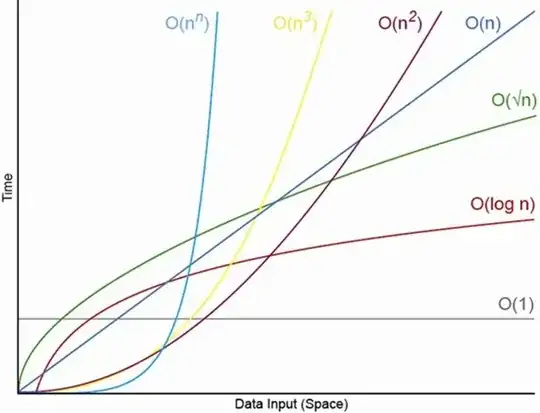I am highly confuse while calculating time complexity of Merge Sort Algorithm. Specifically on the Dividing Step. In the dividing step we have to calculate the mid point of "n" i.e. "q = n/2".
How it will take constant time. If we assume that divide is an elementary operation and take very less time, then also we should include the time taken by divide.
Suppose If we have to divide very large amount of time then it must be consider while calculating the time complexity. According to me Number of divides depends on "n" i.e. Calculating mid point depends on the array size "n".
For Example,
if n = 2
Number of divides required = 1
if n = 4
Number of divides required = 3
if n = 8
Number of divides required = 7
if n = 16
Number of divides required = 15 and so on....
According to me,
If Recursively Define:-
Number of Divide needed for "n" (input array length = n) <= 1 + Number of divides needed for (n-1). {when n = 0 Number of divides = 0 when n = 1 Number of divides = 0}
Or..........
Number of Divide needed for "n" (input array length = n) <= (Summation of 2^i from 0 to n-1) - (2^n)
So, it depends on "n". So how we can take it as a constant time????
